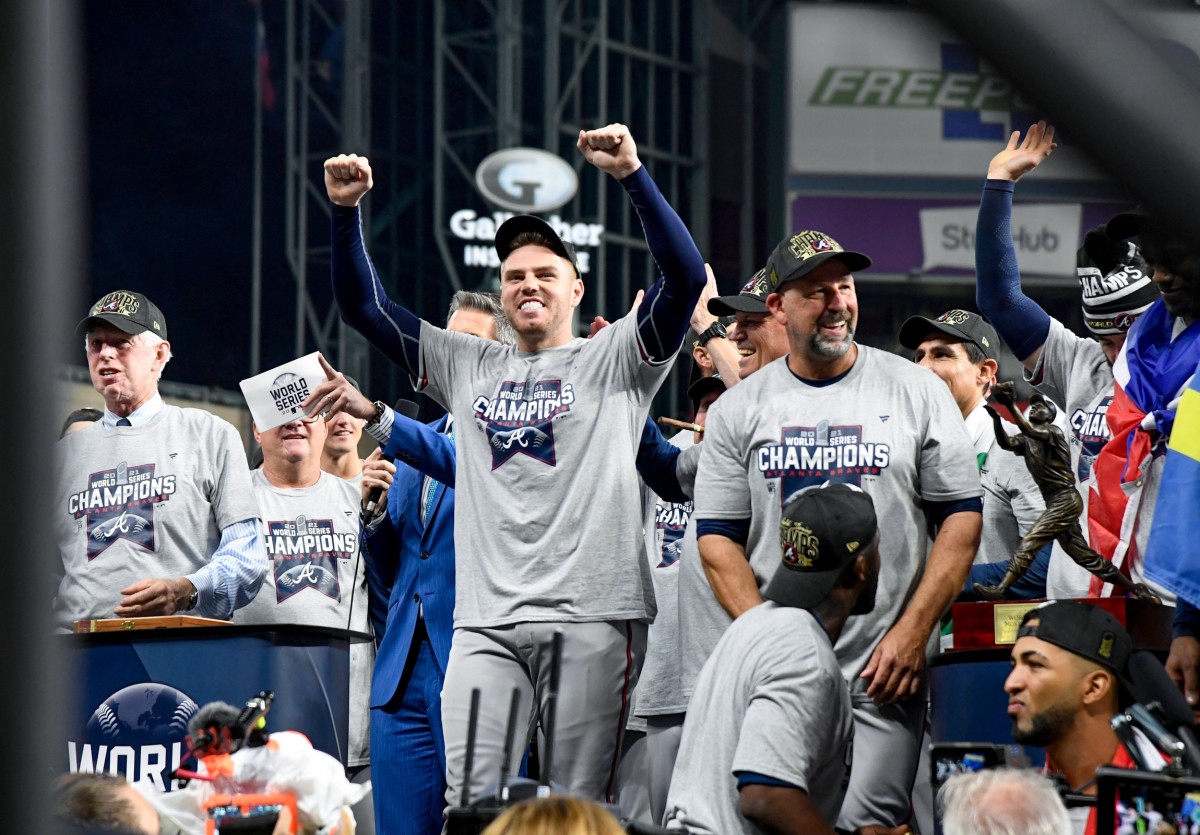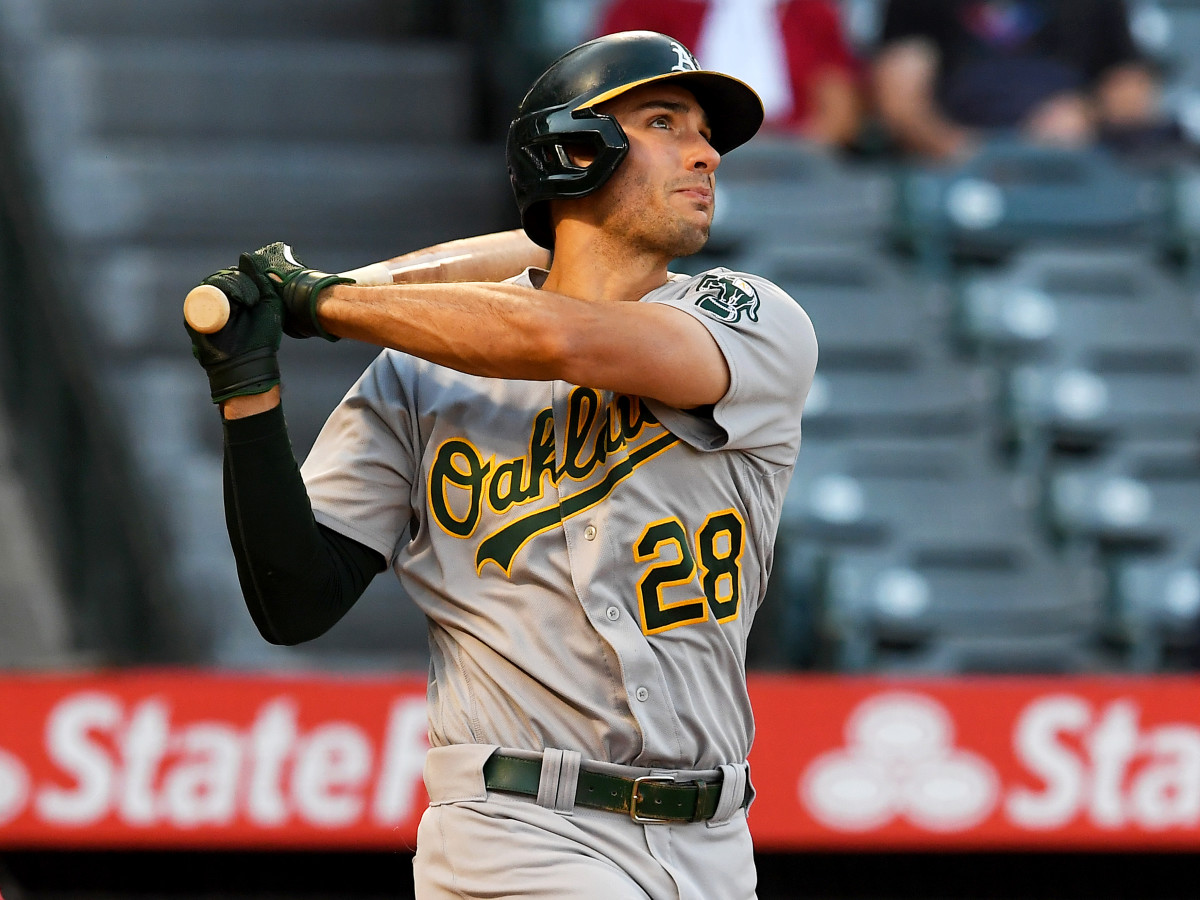The Braves Are Going to Miss Freddie Freeman
Fifteen years with the Braves, the last four as a top 10 MVP finisher, Freddie Freeman appears to be worth more to the Dodgers than to the only team he has known. It makes sense only when aging curves guide teams more than the halo effect of signing, developing and keeping a franchise player.
Atlanta appeared to pivot away from Freeman, 32, Monday when it sent four young players to Oakland to get first baseman Matt Olson, who is four years younger (and two years away from his own free agency). Olson is as capable a replacement for Freeman as could be had. But he is no Freeman.

Maybe there is a grand plan to keep Olson and Freeman, but no such signs have been evident from the Braves. Last year Freeman told friends that if the Braves dawdled with contract offers, he was prepared to return to his roots in Southern California. Atlanta whiffed on the chance to lock up Freeman during the season and after the 2021 World Series title. They reportedly offered Freeman $135 million over five years, which basically took the Paul Goldschmidt contract (five years, $130 million) and added $1 million a year.
From an accounting point of view, it might make sense. The Braves are taking two prime years of Olson (with the cost of the traded players attached) rather than assuming the risk of the downside to Freeman’s career—which has not been apparent yet.
Freeman soon will become the seventh first basemen to sign for an average annual value of $23 million or more. The previous six were Miguel Cabrera, Goldschmidt, Ryan Howard, Albert Pujols, Prince Fielder and Chris Davis. All signed for at least five years and through at least age 36.
How did those deals turn out? Not good. In 39 seasons under those contracts (not including two years left for Cabrera and Goldschmidt), those players returned only 12 qualified seasons of average or better offense (OPS+ of at least 100), with three of those 12 seasons coming from Goldschmidt in his three years with St. Louis. Legacies die hard, especially first basemen because of their general limited athleticism.
In rebuild mode, Oakland did well to focus on middle-of-the-field young talent, but the cost was not especially high for Atlanta to get Olson. Outfielder Cristian Pache is a wonderful Gold Glove caliber center fielder who may or may not hit. Catcher Shea Langeliers already is 24 with only 151 career pro games (in part because of COVID, which canceled the 2020 minor-league season; trading prospects of the COVID generation is a case study in the making). Young pitchers Ryan Cusack and Joey Estes have the quality fastballs that the A’s can dream on.
Olson has terrific power, is a fine defender, grew up in Georgia and has been a team leader since the minors. Braves fans will be happy with Olson.

But here is when they will miss Freeman: when there is a runner at second or third base and Freeman isn’t there to get him in. Freeman has an awkward hitting stroke that some wonder how it will hold up as he ages. But Freeman has such good hands and a quick path to the ball that despite its lack of beauty the swing is built for the long haul.
In today’s game, thanks to defensive shifts and bullpen specialists, you measure great hitters by how they do with runners in scoring position and what they do facing a relief pitcher for the first time in a game. Those are the hot spots. Freeman is among the very best. Let’s match Freeman and Olson to see what Atlanta might be losing:
Overall Avg. | Avg. w/RISP | Active Rank* | |
|---|---|---|---|
Freeman | .306 | .327 | 5 |
Olson | .252 | .246 | 127 |
* Minimum 400 games
Olson is a little bit worse in the big spots than overall. Freeman gets better. He is a wizard when games are decided. He’s in my top five of hitters you want at the plate in a key spot. I expect he will be even better when the shift is banned in 2023. Who wins the battle when we’re talking the matchup game? Again, it’s not close:
First PA vs. Relief Pitcher, 2016–21
Avg. | Active Rank* | |
|---|---|---|
Freeman | .305 | 1 |
Olson | .243 | 186 |
* Minimum 300 games
The only proof you need about how Freeman controls an at bat happened on the biggest stage last year. The Braves did not win a World Series game last year without Freeman winning a key at bat, especially when defeating a matchup designed to defeat him:
Game 1: With a runner at third and less than two outs, the Astros bring in lefty Brooks Raley. Freeman foils the strategy with one pitch. He hooks a slider to right field for a sacrifice fly.
Game 3: In the third inning of a scoreless game, Freeman takes a down-and-in fastball from Luis Garcia and shoots it to left-center for a single. The hit moves Eddie Rosario to second base, whence he scores on an Austin Riley double. The Braves never trail.
Game 4: The Braves trail 2–0 in the sixth when Houston brings in Raley with Rosario and Freeman due to hit as the second and third batters. Rosario doubles. Raley throws Freeman six cutters and sliders, the last of which was an outside edge cutter Freeman pokes foul. On the seventh pitch, Raley throws a curveball. Freeman is not fooled. He watches it bounce for ball four. Riley drives in Rosario with a single.
Game 6: The Braves lead 5–0 in the fifth when Freeman faces another lefty, Blake Taylor, with a runner on first. Taylor hangs a 3-and-1 slider, which Freeman bangs off the wall in left field for an RBI double. Two innings later, Freeman crushes a slider from Ryne Stanek for a home run. It is the last run of the Braves’ 7–0 clincher.
The Braves may be closing the door on what was a franchise player. Freeman should have been the successor to Chipper Jones as a Brave who never wore another uniform. Times change. So do guiding principles of front offices.
Much of the fight in the last CBA talks was caused by what analytics have done to the game and player value. Every team is wedded to the aging curve, which is why over the past five years plate appearances for players 31 and older have declined by 22%. Freeman may have won an MVP and a World Series with the team that drafted him in the second round in 2007, but on paper he also is a 32-year-old first baseman with a cliff to his career looming—if you believe the actuarial charts.
More MLB Coverage:
• Twins’ Three Trades Signal They Aren’t Done Yet
• Even With the ‘Steve Cohen Tax’, Mets Leaders Are Grateful to Be Back
• Rodón Deserved Hefty Deal Despite Durability Concerns
• The Battle for Baseball’s Soul Continues
